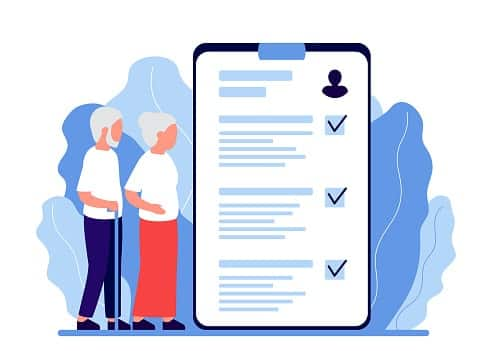Are short-term plans an alternative to ACA plans?
Short-term health plans should be considered as an alternative to COBRA rather than to an ACA plan.
Short-term plans are not meant as long-term health insurance plans to cover people with ongoing health issues. A short-term plan is meant to fill the gap when you’re in between jobs or have started a new job and don’t have health benefits yet.
COBRA plans allow you to keep your former employer’s coverage for up to 18 months after leaving a job. However, they’re usually very expensive since the employer is no longer paying part of the cost.
Short-term health insurance plans can fill that gap at a lower cost, but don’t provide the same level of coverage.
Some states don’t allow short-term plans, while others have limitations.
States that don’t allow short-term plans are:
- California
- Hawaii
- Massachusetts
- New Jersey
- New York
States that restrict short-term plans to six months:
- Colorado
- Illinois
Places that allow short-term plans for only three months with no renewals:
- Delaware
- District of Columbia
- Maryland
- New Mexico
- Vermont
- Washington
What isn’t covered by a short-term plan?
Short-term plans are only meant for the unexpected, like an accident or sudden illness, rather than regular, ongoing medical care. Unlike ACA plans, short-term plans can turn you down for your past medical history and won’t cover any pre-existing conditions. The essential benefits of an ACA plan don’t apply, which means they don’t cover all of the same things.
Short-term plans can exempt coverage of those services or place limits on them. An example is prescriptions. A short-term plan may cover medication if you go to the hospital for an unexpected condition. However, the plan likely won’t cover a prescription for a pre-existing chronic condition like asthma.
In addition, short-term plans don’t usually cover maternity care.
What do ACA plans cover?
The ACA outlines a list of things that every ACA plan must cover.
The essential benefits under the ACA are:
- Ambulatory patient services
- Emergency services
- Hospitalization
- Maternity and newborn care
- Mental health and substance use disorder
- Prescription drugs
- Rehabilitation services
- Laboratory services
- Preventive and wellness services
- Pediatric services, including oral and vision care
By law, an ACA plan can’t turn you down due to pre-existing conditions like chronic illnesses.
“If someone has a chronic condition and medical concerns, they should be on an ACA plan to get the robust coverage they need,” Jan Dubauskas, vice president and senior counsel at Health Insurance Innovations says.
ACA marketplace vs. short-term plans: Cost comparison
Short-term health plans are inexpensive. Dubauskas estimates you can find plans that cost about $100 a month.
The average cost of an ACA plan depends on a lot of factors, but here are the average rates nationwide for each tier, according to the Kaiser Family Foundation.
| Plan | Bronze | Silver | Gold |
|---|---|---|---|
| Nationwide average premium, monthly | $381 | $486 | $507 |
If you qualify for subsidies based on your income, you can find ACA plans for less than a short-term plan. There are also catastrophic plans available through the ACA that are cheaper, but have strict requirements to qualify. It’s worth looking into both options to find a cheaper rate.
Health insurance finder tool

COBRA
Learn more about COBRA
How much is your annual household income?
How many members are in your household?
Medicare
Medicare costs vary depending on which option you choose.
Learn more about Medicare costs.
Medicaid

Parent's employer-sponsored health insurance

Spouse's employer-sponsored health insurance

Employer-sponsored health insurance

Preferred-provider Organization (PPOs)
Preferred-provider organization (PPOs) plans are the most common type of
employer-based health plan. PPOs have higher premiums than HMOs and HDHPs, but
those added costs offer you flexibility. A PPO allows you to get care anywhere
and without primary care provider referrals. You may have to pay more to get
out-of-network care, but a PPO will pick up a portion of the costs.
Find out more about the differences between plansHealth maintenance organization (HMO)
Health maintenance organization (HMO) plans have lower premiums than PPOs.
However, HMOs have more restrictions. HMOs don't allow you to get care outside
of your provider network. If you get out-of-network care, you'll likely have to
pay for all of it. HMOs also require you to get primary care provider referrals
to see specialists.
Find out more about the differences between plansHigh-deductible health plans (HDHPs)
High-deductible health plans (HDHPs) have become more common as employers look
to reduce their health costs. HDHPs have lower premiums than PPOs and HMOs, but
much higher deductibles. A deductible is what you have to pay for health care
services before your health plan chips in money. Once you reach your deductible,
the health plan pays a portion and you pay your share, which is called
coinsurance.
Find out more about the differences between plansExclusive provider organization (EPO)
Exclusive provider organization (EPO) plans offer the flexibility of a PPO with
the restricted network found in an HMO. EPOs don't require that members get a
referral to see a specialist. In that way, it's similar to a PPO. However, an
EPO requires in-network care, which is like an HMO.
Find out more about the differences between plans
Learn more about individual insurance plans
ACA marketplace vs. short-term plans: When can you enroll?
ACA plans allow you to enroll or make changes to your plan during open enrollment. That is between November 1 and December 15 in most states.
There are a handful of states with longer open enrollment:
- California: November 1 to January 31
- District of Columbia: November 1 to January 31
- Massachusetts: November 1 to January 23
- Minnesota: November 1 to December 22
- New Jersey: November 1 to January 31
- New York: November 1 to January 31
- Rhode Island: October 15 to December 31
- Washington, D.C.: November 1 to January 31
You can also sign up or make changes to these plans if you qualify for a special enrollment period. These periods are only if you have a qualifying life event, including:
- Divorce
- Marriage
- Birth or adoption of a child
- Death of a spouse or partner that leaves you without coverage
- Your spouse or partner, who has you covered, loses his/her job and health insurance
- You lose your job and with it your health insurance
- Your hours are cut making you ineligible for your employer's health insurance plan
- You are in an HMO and move outside its coverage area
On the other side, you can enroll in a short-term plan at any time.
“The premise of (short-term plans) is you never know when someone is going to lose a job,” Dubauskas says.












